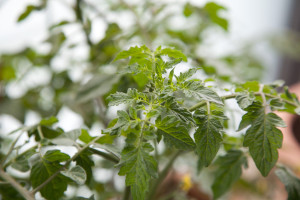You Can Still Have Homegrown Food During the Cold Months With These Gardening Tips
 Summer and fall don’t need to be the only seasons of homegrown bounty. Eating garden-fresh can still happen when the winter months arrive. You can grow tasty nutritious vegetables indoors if you know what to plant and where. Here are our gardening tips for keeping your thumb green and your table fresh from November to March.
Summer and fall don’t need to be the only seasons of homegrown bounty. Eating garden-fresh can still happen when the winter months arrive. You can grow tasty nutritious vegetables indoors if you know what to plant and where. Here are our gardening tips for keeping your thumb green and your table fresh from November to March.
Location, Location, Location
In the same way that you carefully choose your outdoor garden space, you’ll need to pick the choice locations indoors for your winter growing. Location is all-important since plants need light in order to grow. A sunny window is ideal. Other locations with indirect light can work, but you’ll probably want to augment with special grow lighting to maintain constant light and temperature. Many vegetables thrive on 10-14 or more hours of sunlight which can be hard to get in the dark of winter, so adding some artificial lighting can make all the difference between a leggy or leafy plant and one that actually produces blooms and fruit.
Home Sweet Home
The next most important component for your indoor garden is quality soil. All indoor plants need well-drained soil. This usually means a pot with drain holes at the base and a saucer underneath to trap the leakage. However, you can also place small stones or pebbles in the bottom of a container without holes for the same effect. Rich soil is key to making your indoor garden home sweet home. Quality soil typically will be made up of dirt plus sand plus compost.
Gardening Tips on What to Grow Indoors
Some vegetables do better inside than others, so here is our suggested “winter grow list”.
- Try a dwarf avocado tree. These darlings can grow up to 10 feet tall.
- Cherry tomatoes do well in an indoor setting. You can try growing Sweet Million tomatoes up a pole or indoor lattice. Dwarf french pole beans also work well trained along an indoor guide.
- Bush beans are the easiest to grow and pick from a large indoor pot.
- Root vegetables grow well in winter and can be grown successfully in pots. Consider beets and radishes.
- Sweet, tender potatoes can do fine grown in a large plastic sack. Use rich soil and leave space at the top to add more as the plants mature. Potatoes only need five or six hours of sunlight to produce.
Once you’ve prepared your soil and picked the ideal location, you’ll want to clearly identify each plant. Using garden markers is the sure-fire way to help you identify your plants. Kincaid Plant Markers offers stainless steel labels that will identify each plant whether you use them indoors or out. Our quality markers will still be looking great years from now. So on our list of winter gardening tips we must include: the right location, the right soil and the right name plate. Winter isn’t the end for gardeners; it’s just a new environment.
